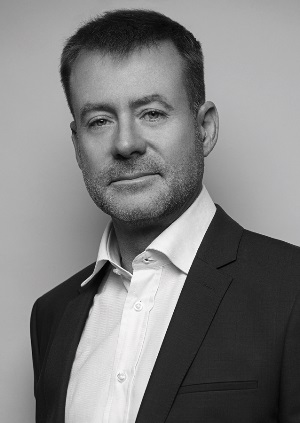An expanded investment universe, competition from cheap passives, lumpy performance and increasingly sophisticated demands from advisors pose challenges to the local asset management industry. The incumbent “single-manager” model in South Africa, which has dominated for the last several decades, will be placed under pressure.
It is increasingly difficult to accept the case for an “in-house” investment team driving global asset allocation decisions, while also conducting securities-level research in all asset classes. In a market where portfolios are progressively becoming more internationalised, asset managers in South Africa will need to find a niche.
The team you need for modern, multi-asset portfolios cannot be housed under one roof.
The story of modern retail asset management in SA
In the early 1990s, the traditional insurance savings industry was being disrupted by emerging platform (LISP) insurgents, which symbiotically propelled the unit trust industry’s assets into the stratosphere. These were halcyon days for freshly minted CFAs and spawned a plethora of new asset management firms. Platform choice had turned advisors into fund pickers and market timers.
The Emerging Market Crisis in 1998, followed in quick succession by the bursting of the Dotcom bubble in 2000 and the catastrophic collapse of the rand in 2001 put paid to many advisors’ sense of adventure. This heralded in the ascendency of the ubiquitous multi-asset fund – the venerable income, cautious, moderate and balanced funds.
This was asset management’s first recognition of the critical role of risk-profiled funds and of the intermediary as an advisor as opposed to salesman. Advisors, bruised, were equally happy to outsource these decisions as the ambit of professional advice services expanded.
Changes and Challenges
Globalisation of portfolios
As SA-specific risks became more concentrated, so investors’ portfolios have become more global. South African asset managers have traditionally offered their standard risk-profiled ranges as Regulation 28-compliant, but pitch them for discretionary and living annuity assets too.
As SA-specific risks became more concentrated, so investors’ portfolios have become more global.
This domestic concentration is an anomaly that is becoming harder to support, especially as one can build portfolios with similar volatility characteristics with higher offshore weights.
The need for specialisation
The breadth and depth of the global investment universe is
mind-boggling. Outside South Africa, you have developed market equities across North America, Western Europe and the Pacific Rim; emerging equities in Asia, Europe, Latin America and Africa; global sovereign, inflation-linked, corporate, high yield and emerging market bonds. Then there’s property, commodities and infrastructure – and the list goes on.
In each of these asset classes there are specialists that you can put through the wringer in a way you can’t in a job interview. If you fire them, it is a decision, not a labour process. The simple point is that the team you need for modern, multi-asset portfolios cannot be housed under one roof.

Passive and the separation of alpha and beta
The market is polarised between adherents of an active approach and passive investment acolytes. Both have their role and multi-managers sensibly exploit this. However, it cannot be that the incumbent asset management model is one or the other, which it currently is.
In unconflicted fee models, the specialist multi-manager is spending the investor’s money to achieve the best outcome and resists being boxed by ideology.
The costs of lumpy performance
Many traditional active managers treat asset classes as an extension of securities, something you are required to take strong directional view on. However, macro calls are hard to get right consistently and are a massive driver of performance variability. Large fluctuations in performance affect investor composure, who predictably then make poor decisions.
Large fluctuations in performance affect investor composure, who predictably then make poor decisions.
Many incumbent firms experience protracted periods of out- and underperformance, often accompanied by large inflows and outflows of assets, damaging money-weighted returns. There is not a great deal of evidence that this extra active risk is sufficiently rewarded.
The role of engineering
While tactical asset allocation as a core competency is losing its lustre, the importance of asset class optimisation, portfolio construction and risk management is gaining ascendency.
This has ushered in a whole new breed of investment professionals who never need to look at a company’s income statement (there are super-specialists around the world who can be appointed to do that). Instead of managing an individual multi-asset fund, their job is to get a range of risk-profiled portfolios to predictably “fly in formation”.

Outcome-based investing
As advice has become more specialised, what advisors demand of asset managers has changed too. Instead of identifying single manager multi-asset funds that can be cobbled together, they are increasingly seeking a fund toolkit that can be linked to the advice process. Individual funds are no more than numbered wrenches. There will be a far greater focus on mapping advice to predictable portfolio characteristics.
Quo vadis
South Africa has great asset managers and the number and quality of our investment professionals relative to AUM must be world leading. But the day of reckoning is out there, and firms will need to decide what they are and find their niche.
Being a South African single asset class specialist appealing to a global market of investors seems more sustainable than aspiring to being a global asset manager in South Africa appealing to domestic investors. Really understanding your core competency and doubling down on it is a good strategy.












